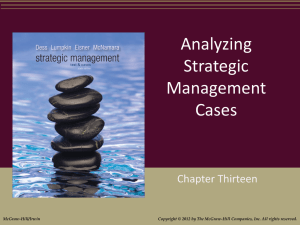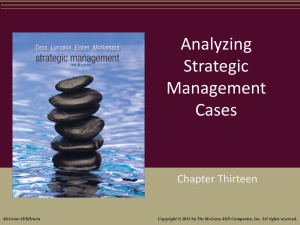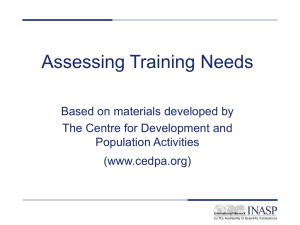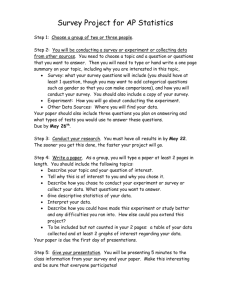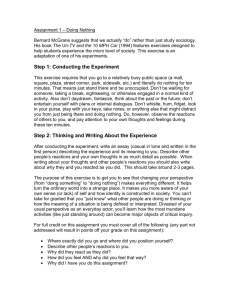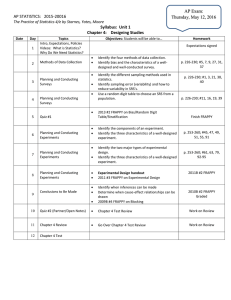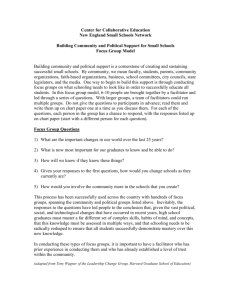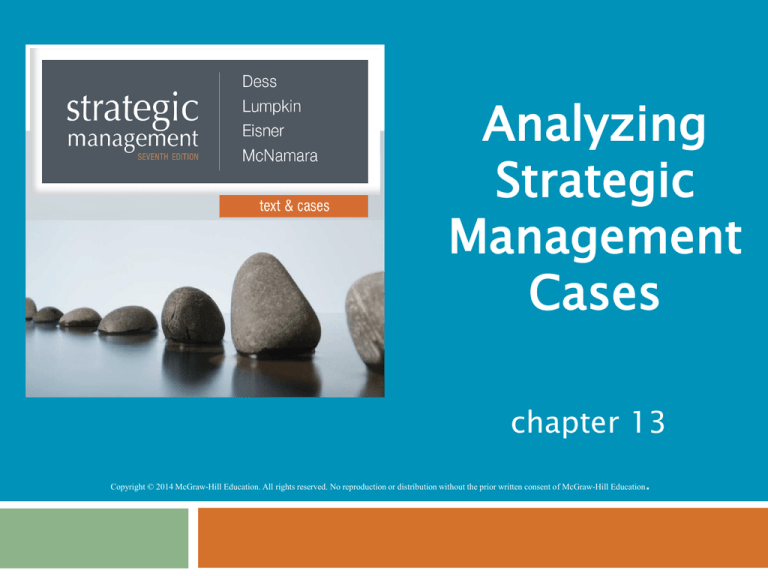
Analyzing
Strategic
Management
Cases
chapter 13
Copyright © 2014 McGraw-Hill Education. All rights reserved. No reproduction or distribution without the prior written consent of McGraw-Hill Education
.
Learning Objectives
13-2
After reading this chapter, you should have a
good understanding of:
LO13.1 How strategic case analysis is used to
simulate real-world experiences.
LO13.2 How analyzing strategic management cases
can help develop the ability to differentiate,
speculate, and integrate when evaluating complex
business problems.
LO13.3 The steps involved in conducting a strategic
management case analysis.
Learning Objectives
13-3
LO13.4 How to get the most out of case analysis.
LO13.5 How integrative thinking and conflict-
inducing discussion techniques can lead to better
decisions.
LO13.6 How to use the strategic insights and
material from each of the 12 previous chapters in the
text to analyze issues posed by strategic
management cases.
Strategic Case Analysis
13-4
Consider…
To remain competitive, established firms
must continually refine their ability to solve
business problems. This requires making
good decisions.
Making a good decision requires choosing
among various alternatives, and research is
required in order to identify alternatives.
Good research requires asking and
answering the right questions.
Strategic Case Analysis
13-5
Case
analysis helps us learn how to ask
good questions & make good decisions
Why
do some firms succeed and others fail?
Why are some companies higher performers
than others?
What information is needed in the strategic
planning process?
How do competing values and beliefs affect
strategic decision-making?
What skills and capabilities are needed to
implement a strategy effectively?
Question?
13-6
The strategic management process entails three
ongoing processes:
A.
B.
C.
D.
analysis,
analysis,
analysis,
analysis,
actions, and synthesis.
decisions, and actions.
evaluation, and critique.
synthesis, and antithesis.
Strategic Case Analysis
13-7
Strategic
management cases include
A
detailed description of the challenging
situation faced by an organization
Usually includes a chronology of events
Can include financial statements, product
lists, interviews with employees
Strategic
An
case analysis requires
ability to evaluate business situations
Go beyond the textbook & root out essential
issues and causes of a company’s problems
Strategic Case Analysis: Skills
13-8
Strategic
skills needed include the ability
to differentiate:
Evaluate
many different elements of the
situation at once
Differentiate between the factors that are
influencing the situation
Understand that problems are often complex
& multilayered
Need
to dig deep
Don’t be too quick to accept an easy solution
Strategic Case Analysis: Skills
13-9
Strategic
skills also include the ability to
speculate:
Envision
an explanation that might not
readily be apparent
Imagine different scenarios
Contemplate the outcome of the decision
Deal with uncertainty & incomplete
knowledge
Data
may be missing
Information may be contradictory
Details & consequences may be unknown
Strategic Case Analysis: Skills
13-10
Strategic
skills also include the ability to
integrate:
Consider
the impact of various decisions &
environmental influences on all parts of the
organization
Create one set of recommendations that
affect the whole company
Realize
that changes made in one part of the
company will affect other parts
Need to adopt a holistic perspective
Conducting a Case Analysis
13-11
Preparation:
Investigate
the situation
Analyze and research possible solutions
Gather the advice of others
Put yourself in the shoes of an actual
participant
Are
you a strategic decision-maker?
Are you the business founder or owner?
Are
you a member of the board of directors?
Are you an outside consultant?
Example:
Preparing a Business Plan
13-12
Preparing
a case analysis is like crafting a
business plan. Here are some questions
you should be able to answer:
What
is the competitive advantage?
Is it in a growth market?
What will customers pay for it?
(How will the business make money?)
How will the business be staffed?
Is the product innovative?
Are the plans and goals realistic?
Conducting a Case Analysis
13-13
Step
1: Become familiar with the material
Read
quickly through the case one time
Assess possible links to strategic concepts
Read the case again, making notes
Evaluate application of strategic concepts
Formulate an initial recommendation
Go through the case again to assess the
consequences of actions you propose
Conducting a Case Analysis
13-14
Step
2: Identify problems
Some
cases have more than one problem to
solve
Avoid getting hung up on the case symptoms
Try to articulate the case problems
Sometimes
writing down a problem statement
gives you a reference point
Some
problems will not be apparent until
after you do the case analysis
Conducting a Case Analysis
13-15
Step
3: Conduct strategic analyses
Determine
which strategic issues are
involved
Use strategic tools to conduct the analysis
Five
Forces analysis
Value chain analysis
Contingency frameworks
Financial analysis – Financial Ratio Analysis
Test
your own assumptions about the case
Strategic Case Analysis Tools
13-16
Exhibit 13.1
Summary of
Financial Ratio
Analysis Techniques
Conducting a Case Analysis
13-17
Step
4: Propose alternative solutions
Develop
a list of options
Evaluate the alternatives
Can
the company afford it?
How will competitors respond?
Will employees accept the change?
How will it affect other stakeholders?
How does it fit with the vision, mission &
objectives?
Will the culture or values of the company change?
Conducting a Case Analysis
13-18
Step
4: Make recommendations
Make
a set of recommendations supported by
your analysis
Describe exactly what needs to be done
Explain why this course of action will solve the
problem
Indicate how best to implement the proposed
solution
Note: the solution you propose must solve the
problem you identified
Conducting a Case Analysis
13-19
Preparing
an oral presentation
Organize
your thoughts
Emphasize strategic analysis
Background/problem
statement = 10-20%
Strategic analysis/options = 60-75%
Recommendations/action plan = 10-20%
Be
logical and consistent
Defend your position
Share presentation responsibilities
Conducting a Case Analysis
13-20
Preparing
Be
a written presentation
thorough
Provide
support for your arguments
Reference specific case materials or other facts
Coordinate
team efforts
Avoid restating the obvious
Present information graphically
Exercise quality control, be professional
Good
grammar, spelling, consistent style
throughout
Getting the Most from
Case Analysis
13-21
Keep an open mind
Take a stand for what you believe
Draw on your personal experience
Participate and persuade
Be concise and to the point
Think out-of-the-box
Learn from the insights of others
Apply insights from other case analyses
Critically analyze your own performance
Conduct outside research
Case Analysis
Decision-Making Techniques
13-22
Integrative
thinking involves making
choices by reconciling opposing thoughts
Proposing
more options & new alternatives
Identifying creative solutions
Integrative
What
thinking is done in four stages
features of the decision are salient?
What are the causal relationships between the
features?
What might a sequence of decisions look like?
What might be the most creative resolution?
Case Analysis
Decision-Making Techniques
13-23
Exhibit 13.4 Integrative Thinking: The Process of Thinking and Deciding
Source: Reprinted by permission of Harvard Business School Press from R. L. Martin. The Opposable Mind,
2007. Copyright 2007 by the Harvard Business School Publishing Corporation; all rights reserved.
Case Analysis
Decision-Making Techniques
13-24
Conflict
inducing techniques can be very
helpful in arriving at better solutions
Conflict
Failure
can help avoid groupthink
to critically evaluate alternatives
The
devil’s advocacy approach assigns
someone the role of official critic
Ensures
the group will take a hard look at its
original proposal
Dialectical
inquiry approaches a problem
from two alternative points of view
Formal
debate using a thesis & an antithesis
Case Analysis
Decision-Making Techniques
13-25
Exhibit 13.5 Two Conflict-Inducing Decision-Making Processes
Strategic Case Analysis Process
13-26
Analyzing
Has
organizational goals & objectives
the company developed short-term
objectives that are inconsistent with its longterm mission?
Has the company considered all of its
stakeholders equally in making critical
decisions?
Is the company being faced with an issue that
conflicts with one of its long-standing
policies?
Strategic Case Analysis Process
13-27
Analyzing
Does
the external environment
the company follow trends and events
in the general environment?
Is the company effectively scanning and
monitoring the competitive environment?
Has the company correctly analyzed the
impact of the competitive forces in its
industry on profitability?
Strategic Case Analysis Process
13-28
Analyzing
Does
the internal environment
the company know how the various
components of its value chain are adding
value to the firm?
Has the company accurately analyzed the
source and vitality of its resources?
Is the company’s financial performance as
good as or better than that of its close
competitors?
Strategic Case Analysis Process
13-29
Assessing
Does
a firm’s intellectual assets
the company have underutilized
human capital?
Is the company missing opportunities to
forge strategic alliances?
Has the company developed knowledgemanagement systems to capture what it
learns?
Strategic Case Analysis Process
13-30
Formulating
Has
business-level strategies
the company chosen the correct
competitive strategy given its industry
environment and competitive situation?
Does the company use combination
strategies effectively?
Is the company using a strategy that is
appropriate for the industry life cycle in
which it is competing?
Strategic Case Analysis Process
13-31
Formulating
Is
corporate-level strategies
the company competing in the right
businesses given the opportunities and
threats that are present in the environment?
Is the corporation managing its portfolio of
businesses in a way that creates synergies
among the businesses?
Are the motives of the top corporate
executives who are pushing diversification
strategies appropriate?
Strategic Case Analysis Process
13-32
Formulating
Is
international-level strategies
the company’s entry into an international
marketplace threatened by the actions of
local competitors?
Has the company made the appropriate
choices between cost reduction and local
adaption to foreign markets?
Can the company improve its effectiveness
by embracing one international strategy
over another?
Strategic Case Analysis Process
13-33
Formulating
Is
entrepreneurial strategies
the company engaged in an ongoing
process of opportunity recognition?
Do the entrepreneurs who are launching
new ventures have vision, dedication &
drive, and a commitment to excellence?
Have strategic principles and tools such as
five-forces analysis & value-chain analysis
been used in the process of developing
strategies to pursue the entrepreneurial
opportunity?
Strategic Case Analysis Process
13-34
Achieving
Is
effective strategic control
the company employing the appropriate
informational control systems?
Does the company have a strong and
effective culture that aligns its values &
rewards system with its goals & objectives?
Has the company implemented control
systems that match its strategies?
Strategic Case Analysis Process
13-35
Creating
Has
effective organizational designs
the company implemented
organizational structures that are suited to
the type of business it is in?
Has the company employed boundaryless
organizational designs where appropriate, &
do senior managers maintain appropriate
control of lower-level employees?
Does the company use outsourcing to
achieve the best possible results?
Strategic Case Analysis Process
13-36
Creating
a learning organization and an
ethical organization
Do
company leaders promote excellence as
part of the overall culture?
Is the company committed to being a
learning organization and does it capitalize
on the individual & collective talents of
organizational members?
Have company leaders exhibited an ethical
attitude in their own behavior?
Strategic Case Analysis Process
13-37
Fostering
Has
corporate entrepreneurship
the company resolved the dilemmas
associated with managing innovation, and
is it effectively defining and pacing its
innovation efforts?
Has the company developed autonomous
work units that have the freedom to bring
forth new product ideas & has it used
product champions to implement new
venture initiatives?
Does the company have an entrepreneurial
orientation?
Example:
Why Learn to do a Case Analysis?
13-38
Learning to do case analysis will help:
Increase your understanding of what managers should and
should not do in guiding a business to success.
Build your skills in sizing up company resource strengths &
weaknesses and in conducting strategic analysis in a variety of
industries & competitive situations.
Get valuable practice in identifying strategic issues that need to
be addressed, evaluating strategic alternatives, & formulating
workable plans of action.
Enhance your sense of business judgment, as opposed to
uncritically accepting the authoritative crutch of the professor or
“back-of-the-book” answers.
Gain in-depth exposure to different industries & companies, so
help you acquire something close to actual business experience.

